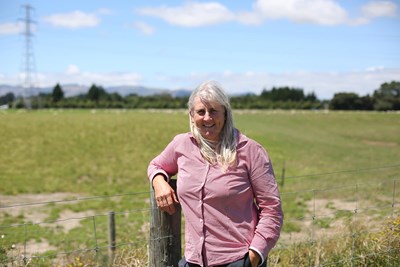Thursday, 7 November 2019
Grubs causing significant yield gaps
AgResearch and Ravensdown have estimated the cost of grass grub damage on pasture yields in Canterbury at around $1.8 million annually.
The research, presented at the Grasslands Conference in Napier, looked at high-producing irrigated dairy pastures in the region over a three-year period, modelling the data and pasture measurements to estimate the scale of the impact of the yield gap.
“We now know the significance of the economic impact,” says lead researcher and author Dr Sue Zydenbos. “We were able to show that the humble grass grub, a native New Zealand insect pest in improved pastures, is associated with a yield gap of 6,800 kg DM/ha, of which modelling estimates to cause an annual $650/ha profit loss.”
Yield mapping was used to identify variance in pasture height within individual paddocks with higher grass grub numbers found in low pasture height areas. The technique involved using a C-Dax pasture meter that carries a laser height sensor, recording a single measurement of pasture height every second along with a GPS position.
“I was surprised to discover that the yield gap continued long after the grub had gone,” Sue says.
“Differences in pasture dry matter production between the high and low height areas persisted over a 12-month period following the yield mapping. However, there still remains a key gap in knowledge around how we can detect the pest early enough to apply cost-effective controls.”
Co-author Ravensdown Chief Scientific Officer Dr Ants Roberts says the more intensive farms seem more likely to be impacted, as well as areas with lighter soils.
“The econometric modelling and analysis have shown there is huge potential for economic benefits by better controlling the grass grub population. Farmers can use yield mapping to identify at risk areas and then treat with an Integrated Pest Management approach, such as reducing cultivation frequency,” Ants says.

